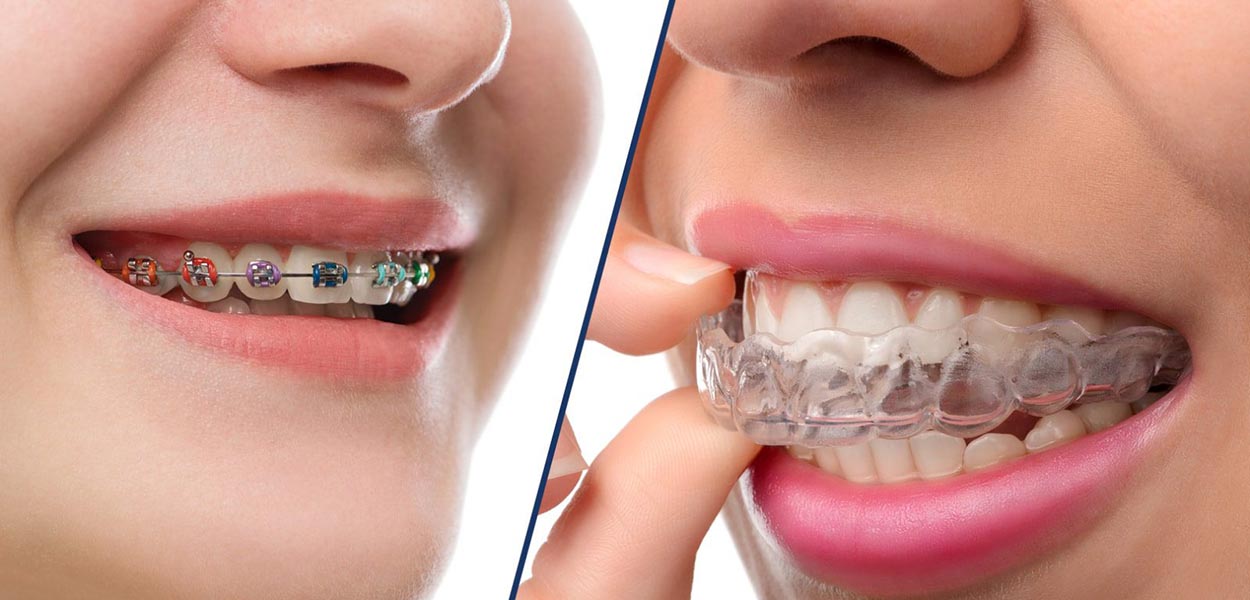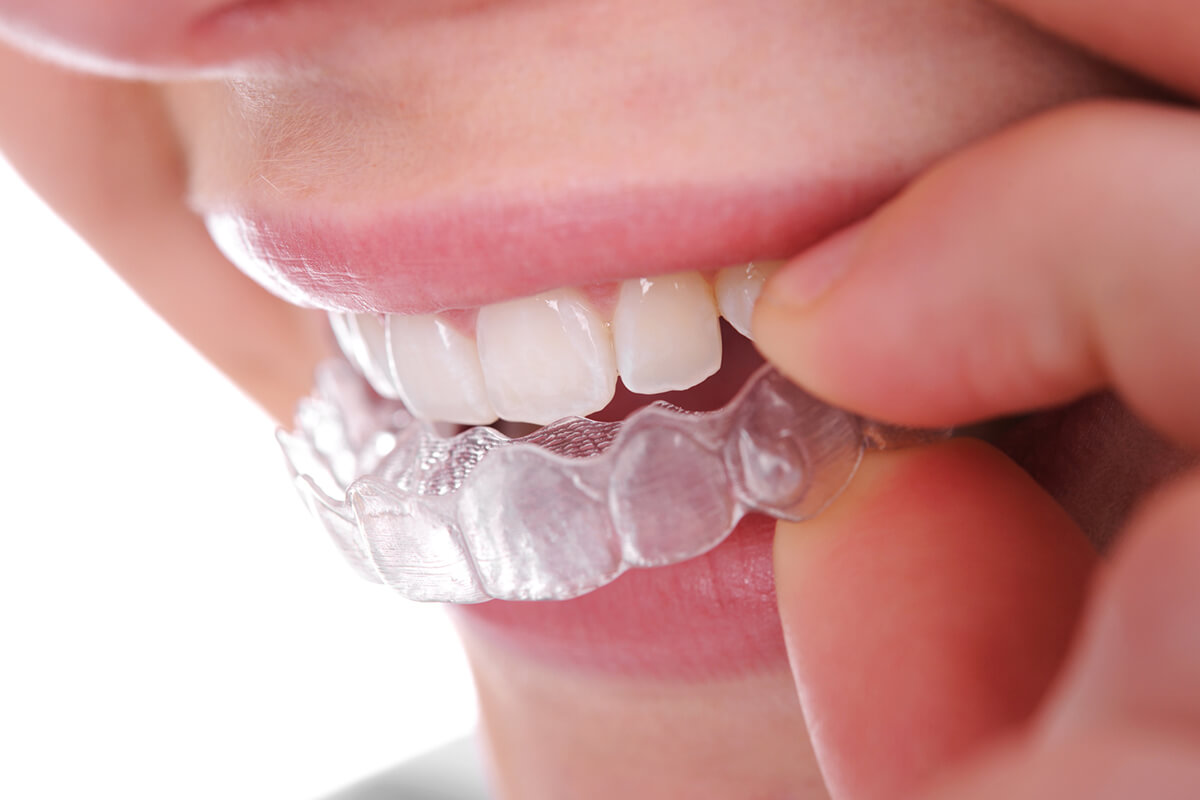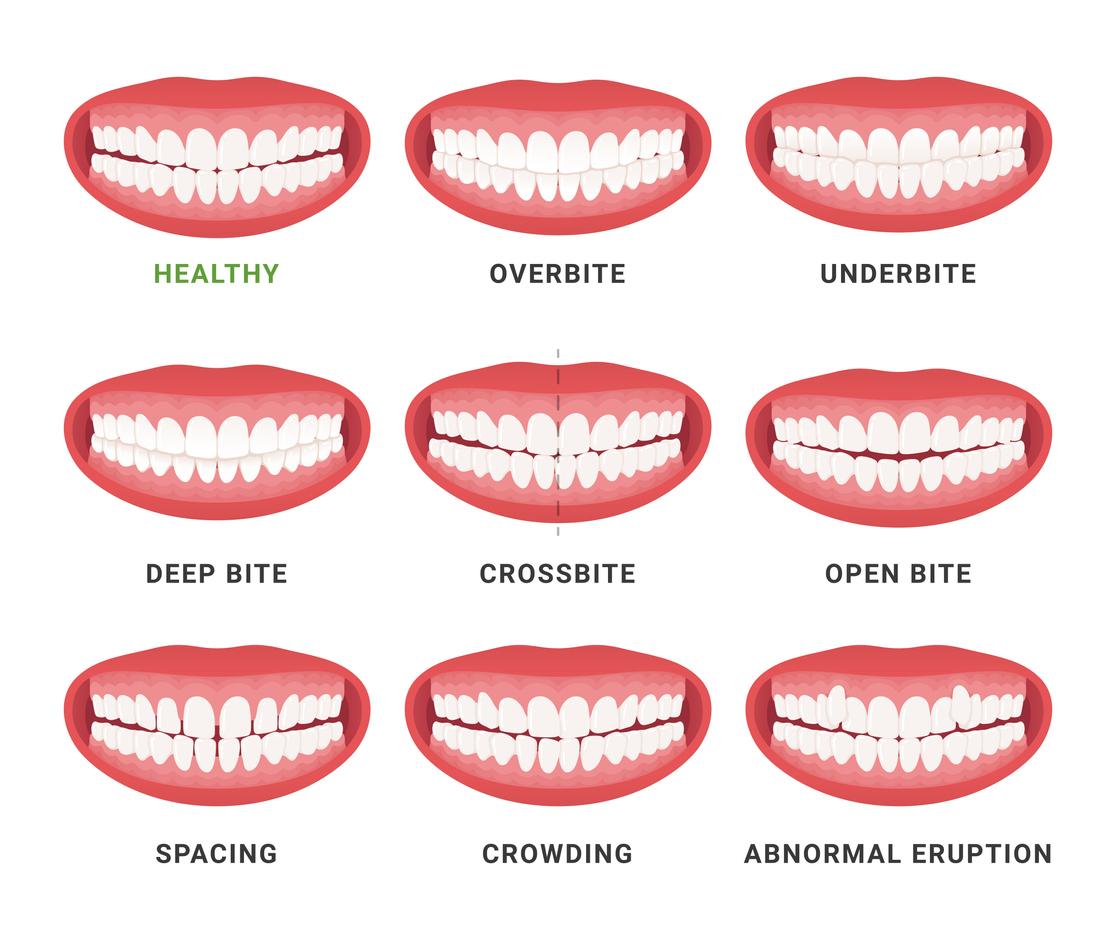Invisalign vs. Conventional Braces: Which Option Is Right for You?
When thinking about orthodontic therapy, the selection between Invisalign and conventional dental braces presents a number of vital factors that merit cautious examination. Invisalign offers a discreet option with detachable aligners, while standard dental braces give a more visible yet effective service for serious imbalance.
Introduction of Therapy Alternatives

In comparison, conventional dental braces are composed of metal braces and cords that are bonded to the teeth. This technique applies continual pressure gradually to achieve alignment. While efficient for complicated orthodontic issues, conventional dental braces call for normal sees for changes and can position difficulties in keeping dental hygiene due to the difficulty of cleaning up about wires and brackets.
Both options have their benefits, and the selection typically rests on details oral problems, way of living choices, and patient conformity. Ultimately, speaking with an orthodontic expert is important for identifying the most appropriate treatment plan tailored to private requirements. Comprehending the nuances of each option can significantly affect the overall success of orthodontic treatment.
Visual Factors To Consider
A considerable aspect influencing the option in between Invisalign and standard braces is the aesthetic allure each therapy uses. Invisalign aligners are crafted from clear plastic, making them basically unseen when used. This discreet look is specifically appealing to teenagers and grownups that might feel uncomfortable about their orthodontic therapy. The capability to keep an all-natural smile throughout the alignment procedure can substantially improve the patient's self-confidence in specialist and social setups.
On the other hand, typical braces include metal brackets and cords, which can be a lot more noticeable. While improvements in orthodontic technology have caused the growth of smaller sized braces and colored elastics, standard dental braces still maintain a more obvious account. For some individuals, the visibility of braces might deter them from seeking essential therapy.
Eventually, the selection in between Invisalign and typical braces may rest on personal preferences concerning visual appeals. Patients who prioritize discretion commonly favor Invisalign, while those who are much less worried concerning exposure may select traditional dental braces. Understanding the aesthetic ramifications of each alternative is essential for making a notified decision that lines up with one's lifestyle and choices.
Convenience and Convenience

In regards to ease, Invisalign aligners are detachable, allowing patients to appreciate their favorite foods without restriction and maintain optimal oral hygiene. Cleaning and flossing are simplified, as the aligners can be gotten throughout these routines, whereas typical dental braces call for cautious maneuvering around braces and wires.
In comparison, typical braces require normal changes, making them much less hassle-free for those with busy timetables. In general, the comfort and ease of Invisalign make it an attractive option for several people seeking orthodontic therapy.
Treatment Duration and Efficiency
While both Invisalign and typical braces work in remedying dental misalignments, the period of therapy can differ dramatically between both alternatives. Generally, Invisalign therapy can take anywhere visit here from 12 to 18 months, relying on the intricacy of the situation. The clear aligners work by gradually shifting teeth right into their wanted placements, and routine follow-ups with an orthodontist aid guarantee progress stays on the right track.
In contrast, traditional dental braces usually call for a longer dedication, typically varying from 18 months to three years. This is because of their fixed nature and using brackets and cords, which can be extra effective for intricate instances and serious misalignments (Invisalign). The therapy performance of conventional braces is well-documented, as they permit accurate changes and higher control over tooth movement
Eventually, the selection between Invisalign and traditional braces may rest on both the anticipated treatment period and the details dental problems available. Consulting with an orthodontist is vital, as they can provide customized referrals based on individual needs, making sure the selected approach lines up with desired end results and timeframes.
Cost Comparison and Insurance Alternatives
Cost plays a significant duty in the decision-making procedure useful link for people thinking about orthodontic treatment, whether choosing Invisalign or conventional dental braces. Usually, the cost of Invisalign varieties from $3,000 to $8,000, while standard braces usually set you back between $2,000 and $6,000. Aspects influencing these expenses consist of the intricacy of the case, the period of treatment, and geographical location.
Many dental insurance coverage strategies provide partial insurance coverage for orthodontic treatments, however the specifics can differ extensively. Typically, standard dental braces may be a lot more regularly covered by insurance plans compared to Invisalign, which some insurance companies classify as an aesthetic procedure.
Furthermore, numerous orthodontic techniques offer flexible layaway plan, making both treatment alternatives extra easily accessible. Individuals need to make inquiries concerning possible financing choices and discounts for upfront payments. Assessing the overall cost, including insurance coverage advantages and payment strategies, is crucial for making a notified decision that straightens with both aesthetic choices and budget plan considerations.

Verdict
In summary, the option in between Invisalign and conventional dental braces rests on multiple elements, including aesthetic preferences, comfort, treatment period, and expense. Invisalign provides a very discreet, removable option that facilitates oral health and dietary find out here now flexibility, while conventional braces might be a lot more ideal for complex oral concerns and typically come with a reduced rate factor. Eventually, consultation with an orthodontist is vital to assess individual conditions and establish the most ideal therapy option for achieving ideal dental alignment.
When considering orthodontic treatment, the selection in between Invisalign and standard braces provides several vital factors that merit cautious assessment.Comparing Invisalign and conventional braces discloses distinct treatment choices for orthodontic adjustment.While both Invisalign and standard braces are reliable in dealing with dental imbalances, the period of treatment can differ substantially between the 2 alternatives.Expense plays a significant duty in the decision-making process for people considering orthodontic therapy, whether deciding for Invisalign or typical dental braces.In summary, the option in between Invisalign and conventional dental braces hinges on several elements, including visual preferences, comfort, therapy period, and expense.
Comments on “Invisalign for Teens: A Modern Solution to Straightening Young Smiles”